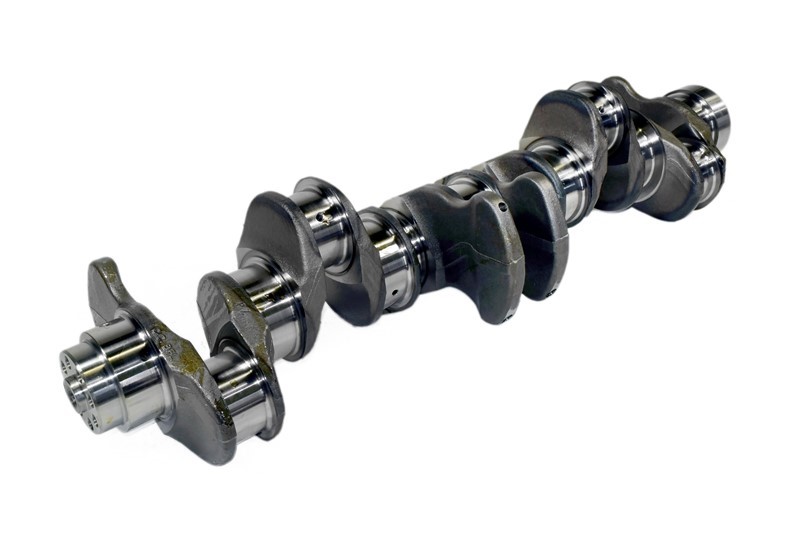The crankshaft is one of the most important parts in any engine. It converts the motion of pistons into usable power. Every time the engine runs, the crankshaft spins and keeps everything moving. Most crankshafts are made from heavy-duty steel or iron to handle stress. But recently, many builders and drivers have started using lightweight crankshafts. These crankshafts offer a mix of benefits and trade-offs. For people looking to boost performance, they’re worth a closer look. Let’s break down what makes them different and how they affect your engine.
What Is a Lightweight Crankshaft?
A lightweight crankshaft is exactly what it sounds like. It’s a crankshaft designed to weigh less than a standard one. Manufacturers use special materials like billet aluminum, forged steel, or other composites. Some models are also machined to remove extra material. The goal is to reduce the rotating mass inside the engine. Less mass means the engine can rev faster and work more efficiently. These crankshafts are often used in racing, performance builds, and light-duty applications. But they’re starting to pop up in other setups too.
The Pros: What Makes Lightweight Crankshafts Appealing
The biggest benefit of a lightweight crankshaft is faster acceleration. Because the engine has less mass to spin, it revs quicker. That gives you snappier throttle response and a sportier feel. Another benefit is reduced strain on the engine. Lighter parts don’t cause as much stress during operation. That can extend the life of bearings and other internal parts. You may also see better fuel efficiency in some cases. With less resistance, the engine doesn’t have to work as hard. All of this makes lightweight cranks very attractive for performance seekers.
Improved Throttle Response and Power Delivery
A lighter crankshaft spins up with less effort. That gives your engine a quicker reaction to throttle input. It feels more responsive, especially in lower gears or off the line. This is ideal for vehicles used in racing or street performance. Every second counts, and the difference can be felt right away. Drivers often say the car feels more alive or “eager.” That makes lightweight crankshafts a favorite in drift builds, autocross cars, and drag setups. Even for daily drivers, the improved response can be a fun upgrade.
Better Engine Efficiency with Less Rotational Mass
The engine spends energy spinning all of its internal parts. The heavier those parts are, the more energy it needs. By reducing crankshaft weight, you’re cutting down on rotating mass. That means more energy can go toward moving the vehicle. This helps fuel economy and can improve high-RPM performance. It also creates less heat, which is better for long-term engine health. Lighter parts help engines run cooler and smoother under load. The result is an engine that feels stronger and more efficient at the same time.
Lower Stress on Bearings and Internal Components
Heavy rotating parts create a lot of force. That force puts pressure on engine bearings, connecting rods, and pistons. Over time, that pressure leads to wear and failure. Lightweight crankshafts help reduce that internal stress. With less force involved, parts last longer and perform better. This can also reduce vibration, which makes the engine feel smoother. A smooth engine is a healthy engine. It also creates a better driving experience, especially over long distances or in demanding conditions.
The Cons: Trade-Offs to Consider
Of course, there are downsides to lightweight crankshafts. The most common concern is durability. Lighter materials may not be as strong as traditional forged steel. That means they can flex or even crack under extreme stress. This is especially true in high-torque or heavy-duty applications. Another issue is low-RPM stability. Lighter cranks don’t always idle smoothly, especially in large engines. That can cause rough starts or stalling. So it’s important to choose the right crankshaft for your build and use case.
Not Ideal for All Builds
Lightweight crankshafts aren’t for every engine. If you have a high-horsepower diesel or a towing rig, you may want to pass. These engines generate a lot of torque and need durable parts. A lightweight crank could fail under that kind of load. They’re also not ideal for engines that spend a lot of time at idle. In those cases, a heavier crank helps with smooth operation. Always consider how the vehicle is used before switching. It’s about finding the right balance between weight, strength, and performance.
Cost and Installation Challenges
Another downside is cost. Lightweight crankshafts often cost more than standard ones. The materials and precision machining drive up the price. Also, they may require professional installation. Lighter cranks often need rebalancing or custom tuning. If the balance is off, it can damage the engine or reduce performance. That means you may need to invest in extra parts or labor. While the performance gains are real, the total cost can add up quickly. Make sure your budget allows for the full upgrade process.
Who Should Consider a Lightweight Crankshaft?
Lightweight crankshafts are perfect for performance enthusiasts. If you want faster revs, sharper throttle, or more fun behind the wheel, they deliver. Racers, drifters, and track-day drivers love the feel. Even weekend warriors with tuned street cars can benefit. That said, it’s important to know your engine. If your build includes forced induction or high torque, check for compatibility. Some setups require stronger crankshafts over lighter ones. But if your power levels are moderate, a lightweight crank can be the perfect match.
Comparing Materials: What Are Lightweight Crankshafts Made Of?
Most lightweight crankshafts use forged steel or billet aluminum. Forged steel cranks are strong and still lighter than cast iron. Billet aluminum cranks are extremely light but not always suited for high-torque builds. Some newer models use advanced alloys or even carbon-reinforced materials. These materials keep the weight low but improve strength. Always check the specs before buying. Some manufacturers design their cranks for specific engines and uses. That helps ensure you’re getting the right combination of weight and strength for your build.
Lightweight vs. Stock: Real-World Performance Gains
In most builds, you can expect better throttle response right away. The engine feels lighter and more eager to rev. 0-60 times may improve slightly depending on the vehicle. You’ll also notice smoother shifting at higher RPMs. For track use, those small gains can add up to better lap times. On the street, the driving experience becomes more engaging. Lightweight crankshafts may not boost horsepower directly, but they help your engine use its power better. That adds up to real performance, especially when combined with other upgrades.
Maintenance and Long-Term Care
Like all engine parts, lightweight crankshafts need proper care. Regular oil changes are a must to protect the bearings. Always use the recommended oil type for your build. If the engine was rebalanced for the crankshaft, keep an eye on vibrations. Any unusual noise or shaking should be checked right away. Make sure the crank stays clean and free from wear. If you’re running a high-performance setup, consider inspecting it during major service intervals. Taking care of your crankshaft ensures long-term reliability and peace of mind.
Final Thoughts: Are Lightweight Crankshafts Worth It?
Lightweight crankshafts offer clear performance advantages. They improve acceleration, reduce engine strain, and create a more responsive driving experience. But they’re not right for every engine or driving style. For high-torque or heavy-duty applications, a stronger crank might be better. Still, for racers, street performance fans, or anyone chasing efficiency, the upgrade makes sense. Just make sure to match the crankshaft to your build and driving habits. Work with a shop that understands balancing and tuning. When installed correctly, a lightweight crankshaft can bring new life to your engine.

